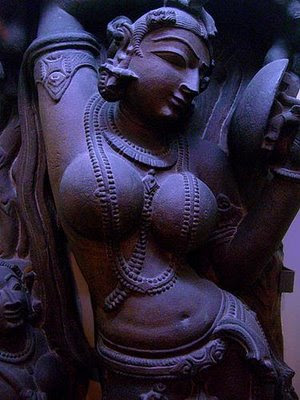MARRY CHRISMAS
roy rocks
Friday, December 24, 2010
EXPLORING KOLKATA 5
INDIAN MUSEUM
STORY
The Indian Museum (Bengali: ভারতীয় জাদুঘর) is the largest museum in India and has rare collections of antiques, armour and ornaments, fossils, skeletons, mummies, and Mughal paintings. It was founded by Dr Nathaniel Wallich a Danish botanist at Serampore (originally called Frederischnagore) near Kolkata (Calcutta), India, in 1814
STORY
The Indian Museum (Bengali: ভারতীয় জাদুঘর) is the largest museum in India and has rare collections of antiques, armour and ornaments, fossils, skeletons, mummies, and Mughal paintings. It was founded by Dr Nathaniel Wallich a Danish botanist at Serampore (originally called Frederischnagore) near Kolkata (Calcutta), India, in 1814
It has six sections comprising of thirty five galleries of cultural and scientific artifacts namely Art, Archaeology, Anthropology, Geology, Zoology and Economic Botany. This multipurpose Institution with multidisciplinary activities is being included as an Institute of national importance in the seventh schedule of the Constitution of India.. It is one of oldest museums in the world. This is an autonomous organization under Ministry of Culture, Government of India...
EXPLORING KOLKATA 4
FEMOUS DAKSHINESWAR KALI TEMPLE
STORY
The Dakshineswar Kali Temple (Bengali: দক্ষিনেশ্বর কালী মন্দির Dokkhineshshôr Kali Mondir, Sanskrit: दक्षिनेश्वर काली मन्दिर) is a Hindu temple located in Dakshineswar near Kolkata. Situated on the eastern bank of the Hooghly River, the presiding deity of the temple is Bhavatarini, an aspect of Kali, literally meaning, 'She who takes Her devotees across the ocean of existence'.[1] The temple was built by Rani Rashmoni, a philanthropist and a devotee of Kali in 1855. The temple is famous for its association with Ramakrishna a mystic of 19th Century Bengal.
STORY
The Dakshineswar Kali Temple (Bengali: দক্ষিনেশ্বর কালী মন্দির Dokkhineshshôr Kali Mondir, Sanskrit: दक्षिनेश्वर काली मन्दिर) is a Hindu temple located in Dakshineswar near Kolkata. Situated on the eastern bank of the Hooghly River, the presiding deity of the temple is Bhavatarini, an aspect of Kali, literally meaning, 'She who takes Her devotees across the ocean of existence'.[1] The temple was built by Rani Rashmoni, a philanthropist and a devotee of Kali in 1855. The temple is famous for its association with Ramakrishna a mystic of 19th Century Bengal.
EXPLORING KOLKATA 3
FAMOUS BELUR MATH TEMPLE
STORY
STORY
Belūr Maṭh is the headquarters of the Ramakrishna Math and Mission, founded by Swami Vivekananda, a chief disciple of Ramakrishna Paramahamsa. It is located on the west bank of Hooghly River, Belur, West Bengal, India and is one of the significant institutions in Calcutta. The temple is notable for its architecture that fuses Hindu, Christian and Islamic motifs as a symbol of unity of all religions.
Thursday, December 23, 2010
EXPLORING KOLKATA 2
STORY:
The Victoria Memorial, officially the Victoria Memorial Hall, is a memorial building dedicated to Victoria, Queen of the United Kingdom and Empress of India, which is located in Kolkata, India - the capital of West Bengal and a former capital of British India. It currently serves as a museum and a tourist attraction.[2] It is an autonomous organization within the Government of India's Ministry of Culture.The memorial was designed by Sir William Emerson using Indo-Saracenic style, incorporating Mughal elements in the structure. Lord Redesdale and Sir David Prain designed the gardens. The foundation stone of the memorial was laid down in the year 1906. The monument was intended to serve as a tribute to the success of the British Empire in India.
EXPLORING KOLKATA 1
SECOND HOOGHLY BRIDGE
STORY : Vidyasagar Setu (commonly known as the Second Hooghly Bridge), is a bridge over the Hooghly River in West Bengal, India. It links the city of Howrah to its twin city of Kolkata. The bridge is a toll bridge for all vehicles. It is one of the longest bridges of its type in India and one of the longest in Asia.The bridge is named after the 19th century Bengali reformist Ishwar Chandra Vidyasagar
The bridge also has sister bridges over the river at different points, namely the Howrah Bridge (Rabindra Setu), the Vivekananda Setu and the Nivedita Setu.
The Vidyasagar Setu is a cable-stayed bridge, with a main span of a little over 457 metres, and a deck 35 metres wide. Construction started in 1978 and the bridge was finally inauguarated on the 10th of October, 1992. The commissioning agency was the Hooghly River Bridge Commission (HRBC) and the contractors for the construction was the consortium of Braithwaite, Burn and Jessop also called BBJ. The construction was planned and supervised by the German engineers Schlaich Bergermann & Partner.
EXPLORING KOLKATA
IMAGE OF KOLKATA FEMOUS HOWRAH BRIDGE
STORY:The Howrah Bridge is a bridge that spans the Hooghly River in West Bengal, India. It was originally named the New Howrah Bridge because it links the city of Howrah to its twin city, Kolkata(Calcutta). On 14 June 1965 it was renamed Rabindra Setu, after Rabindranath Tagore a great poet and the first Indian Nobel laureate. However it is still popularly known as the Howrah Bridge.
STORY:The Howrah Bridge is a bridge that spans the Hooghly River in West Bengal, India. It was originally named the New Howrah Bridge because it links the city of Howrah to its twin city, Kolkata(Calcutta). On 14 June 1965 it was renamed Rabindra Setu, after Rabindranath Tagore a great poet and the first Indian Nobel laureate. However it is still popularly known as the Howrah Bridge.
The bridge is one of the four on the Hooghly River and is a famous symbol of Kolkata and West Bengal. The other bridges are the Vidyasagar Setu (popularly called the Second Hooghly Bridge), the Vivekananda SetuNivedita Setu. Apart from bearing the stormy weather of the Bay of Bengal region, it successfully bears the weight of a daily traffic of approximately 80,000 vehicles and, possibly, more than 1,000,000 pedestrians. It is the sixth longest bridge of its type in the world. and the newly built engineering marvel
Subscribe to:
Comments (Atom)





















